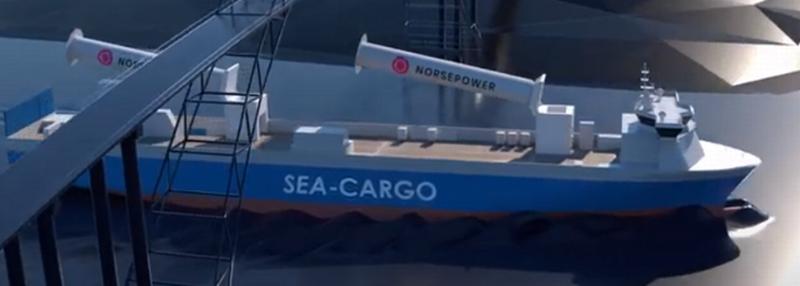 Sail-assist propulsion on commercial ships is developing rapidly, featuring a range of technologies including rotor sails, rigid wing sails, ventilated turbo sails, and even conventional fabric sails.
Sail-assist propulsion on commercial ships is developing rapidly, featuring a range of technologies including rotor sails, rigid wing sails, ventilated turbo sails, and even conventional fabric sails.
One thing that all these rigs have in common, however, is that when they are not converting wind energy into power to propel the ship, they can interfere with operations, whether loading and discharging cargo or navigating under bridges. Now, in addition to fixed installations, engineers are designing rigs that can be moved or tilted out of the way.
In retrofitting sail-assist on existing ships, rotor sails, also known as Flettner rotors, have proven popular due to their relative simplicity and ease of installation. Maersk Tankers has installed two Norsepower Rotor Sails on its 109,647dwt Aframax products tanker, Maersk Pelican. Norsepower has also provided rotor sails on Viking Lines’ LNG-powered ferry Viking Grace, Scandlines’ MV Copenhagen, and MV Estraden, a roro vessel owned by Bore Line. Each of these rotors is fixed on deck and does not interfere with cargo handling, which is not an issue on a tanker, or the upper decks of ferries or roros.
Things get more complicated on, for example, on a geared bulk carrier where rotors could get in the way of rolling hatch covers and deck crane booms. To address just this issue, London-based Anemoi has developed a rail-mounted rotor sail that can be rolled out of the way as required for cargo operations.
An Anemoi four-rotor rail-mounted system was installed on the geared 64,000 dwt ultramax bulk carrier, MV Afros, in 2018 (see the video below). The vessel, owned by Piraeus-based Blue Planet Shipping, has won a range of awards, including the ‘Ship of the Year’ at Lloyd’s List’s Greek Shipping Awards in 2018, and the 2019 Green4Sea ‘Dry Bulk Operator Award’.
In the case of SEA-CARGO’s SC Connector, a 12,000 GT ro-ro cargo vessel, that operates in the North Sea, the issue was not cargo handling but air draft. Suitably sized rotor sails would be too high to clear the multiple bridges and powerlines on its trade route.
To solve the problem, Norsepower developed a design for a two-rotor “tiltable” system. The 35-meter rotors will be hinged to enable them to tilt almost to a horizontal position when required by air draft restrictions.
Preparations for the retrofit on the SC Connector are currently underway, with the installation scheduled for the end of 2020.
